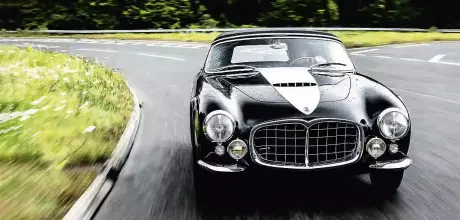1955 Maserati A6GCS/53 Frua Spyder
After a singularly determined restoration, this Maserati A6GCS by Frua won Best of Show at the 2023 Concours of Elegance. James Elliott drives a super-rare 1950s deity.
Photography Barry Hayden
MASERATI FRUA SPYDER
Super-rare concours-winning 1950s deity
I DID IT MY WAY
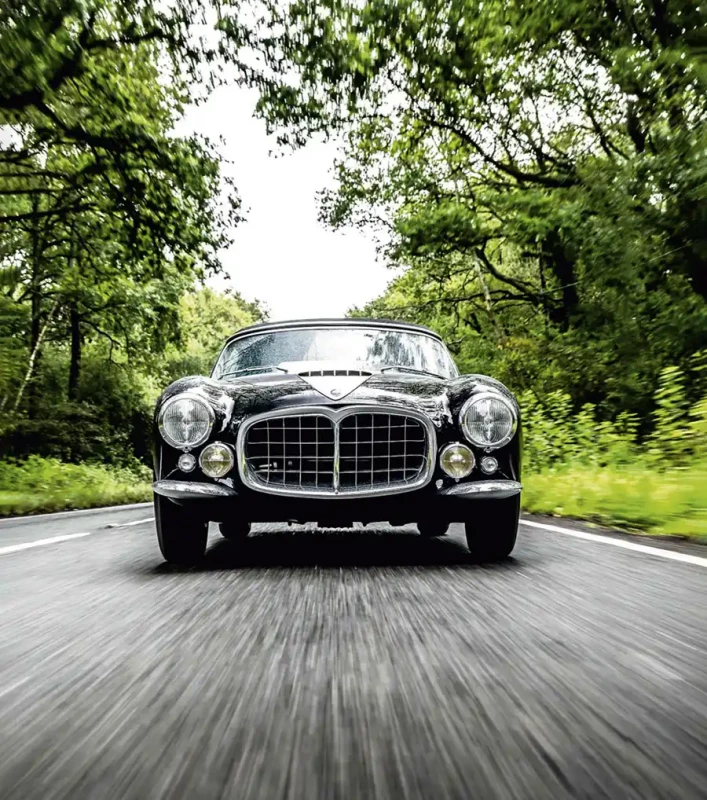
The clues are in the name: A’ is namechecking Alfieri Maserati — the founding brother who died in 1932; ‘6’ refers to a sophisticated race-bred inline six-cylinder engine, ‘G’ means Arsa (cast iron) for the blockmaterial, and ‘CS’ denotes Corsa Sport, which is part of what makes this car really special. More than really special, actually; for many it is the pinnacle of the early Orsi years of Maserati, Modena’s gorgeous, peppy, two-seater sports racer built to trump anything from down the road in Maranello.
‘THERE IS NO QUESTIONING THE BREATHTAKING BEAUTY OF THE FRUA SPYDER’
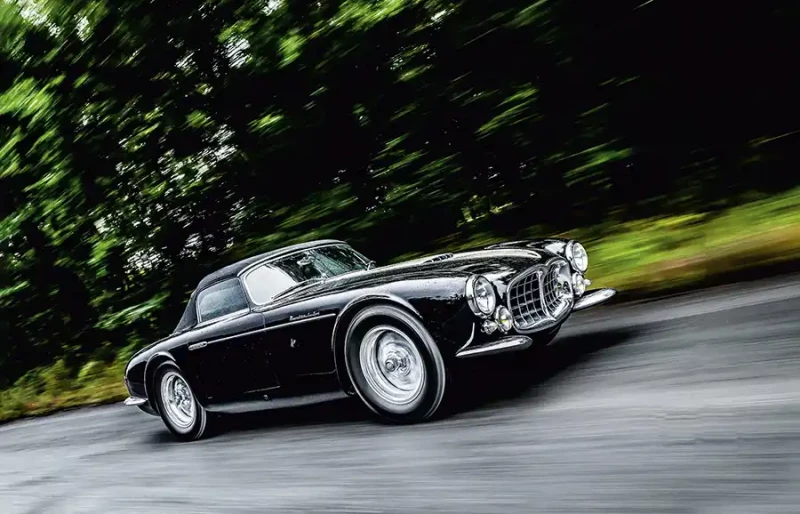
The A6 designation had appeared in 1947, equipped with a 1.5-litre engine possibly most notable for not being a monobloc. Among the variants was the first A6GCS, a lightweight single-seater with a 120bhp 2.0-litre engine that was very successful in Italian racing. From 1951 to 1953, Fantuzzi built a dozen monoposto A6GCM racers developed by Maserati newboy Gioacchino Colombo, the former Ferrari man who had settled in Modena after his second spell at Alfa Romeo.
These were the stepping stones to a major change to the formula in 1953, hence the A6GCS/53 designation. The original had been updated in time for the 1953 Mille Miglia, where it took a class win, but, having been devised to compete in the 1953 World Sports Car Championship, the second-series A6GCS used a lightweight Gilco tubular chassis built around Gioacchino Colombo’s high-revving 170bhp aluminium F2 motor, itself derived from that A6GCM Monoposto’s. All in, the little flyer weighed around 750kg and epitomised a golden era in dual-purpose cars that blended road and track capability with looks in a way that increasingly sophisticated engineering and aerodynamics were soon to prohibit.
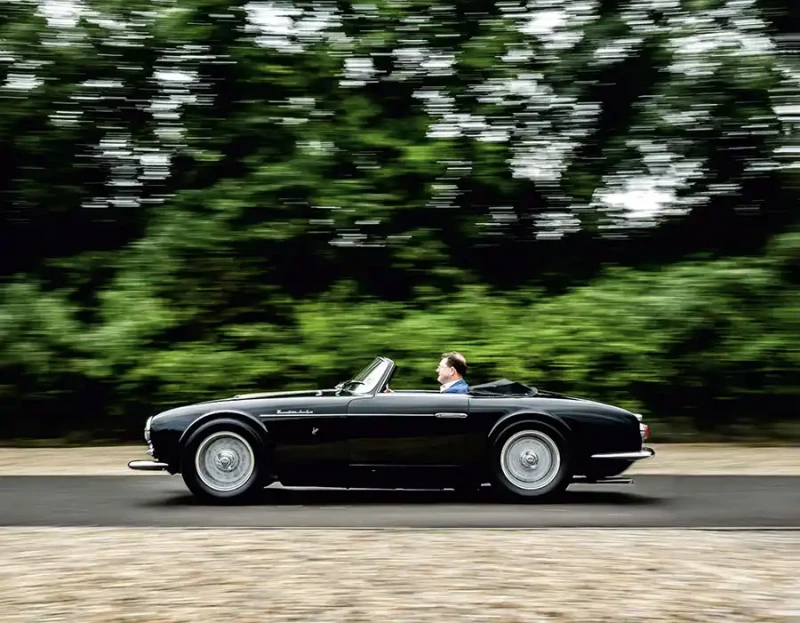
Like most Maseratis, the A6 series came in a kaleidoscope of specs and was clothed by all the leading coachbuilders, including Pinin Farina, Allemano and Vignale, with wilder options by the likes of Fantuzzi. The core of the 50 or so A6GCS/53s was their engine, a 1985cc dual-overhead-cam, twin-plug dry-sump motor fed by a trio of Weber 40 DCO3 carburettors, but their bodywork tended to be sensational, too. They were clothed primarily by Pinin Farina, Vignale, Fantuzzi, even Fiandri, plus latterly three of these Frua Spyders — of which only two are known to survive.
They were the brainchild of Rome main dealer Guglielmo ‘Mimmo’ Dei, who in 1954 ordered a bespoke series of A6GCS/53s: four berlinettas by Pinin Farina and, at that point, a single Frua Spyder. So taken was he with the latter that in January the following year he ordered another pair: chassis 2109 and this car, chassis 2110. They were delivered in July at the cost of Zire300,000 apiece, with Veglia dials and Marchal driving lights, one red with a cream stripe and one ‘banana’ (that’s exactly what it says on the build sheet!) with a black stripe.
‘PROBABLY THE NICEST-DRIVING CAR FROM THE ERA THAT I HAVE HAD THE PRIVILEGE TO SAMPLE’
But Dei’s once-booming business was in trouble. ‘Mimmo’ closed his dealership, formed the Scuderia Centro Sud race team — hardly a more stable financial proposition, one would think — and those two extra Spyders he ordered were shipped back to Frua. There they languished for a year before being sold, 2110 having a couple of local owners before being exported to the USA. And it has been there ever since, its first US owner, Jack Eubank of Long Beach, California, paying the princely sum of $4500 and showing it at Pebble Beach in 1964. And then running the engine dry, which prompted a replacement from an Allemano coupe.
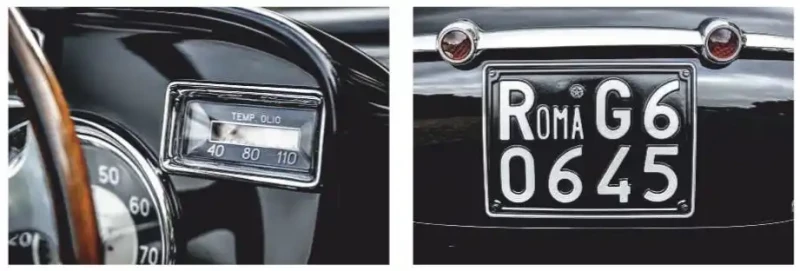
After that this car went through a range of notable collector owners — one of whom (Allen Powell) reversed its colour scheme to black with banana stripe and dash — until it wound up with Bob Rubin in the late 1980s. Following a three-year restoration, 2110 won Best Postwar Touring Car at the 1997 Louis Vuitton Classic in New York.
‘THE LITTLE FLYER EPITOMISED A GOLDEN ERA IN CARS THAT BLENDED ROAD AND TRACK CAPABILITY’
The Maserati was moved on again in 2002 to John Bookout, who took it to Villa d’Este following a cosmetic restoration overseen by Adolfo Orsi himself. There it won the public-vote Coppa D’Oro before it went to ground, only re-emerging in 2018, when it was sold for 1000 times its initial US purchase price, and then some, when it went under the hammer at Gooding & Cos Pebble Beach sale. Its current owner is the San Diego architect and increasingly well-known (and ardent) Maserati collector Jonathan Segal.
Having bought 2110 — actually extravagantly badged ‘Frua’ and ‘Maserati 2000cc Gran Sport’ — Segal commissioned his regular crew at RX Autoworks in Vancouver, Canada, to check it over with the assistance of model guru David Smith. Segal says: I bought it sort of done, it had had some work, but there were details throughout the car that to my mind needed to be made right. For example, the whole egg-crate grille had to be completely taken apart and reassembled to be absolutely spot on. Then behind the seats there was what just looked to me like a big sheet of flappy leather so I put the quilting in, which was proper period stuff and that just helped lift the interior, too.
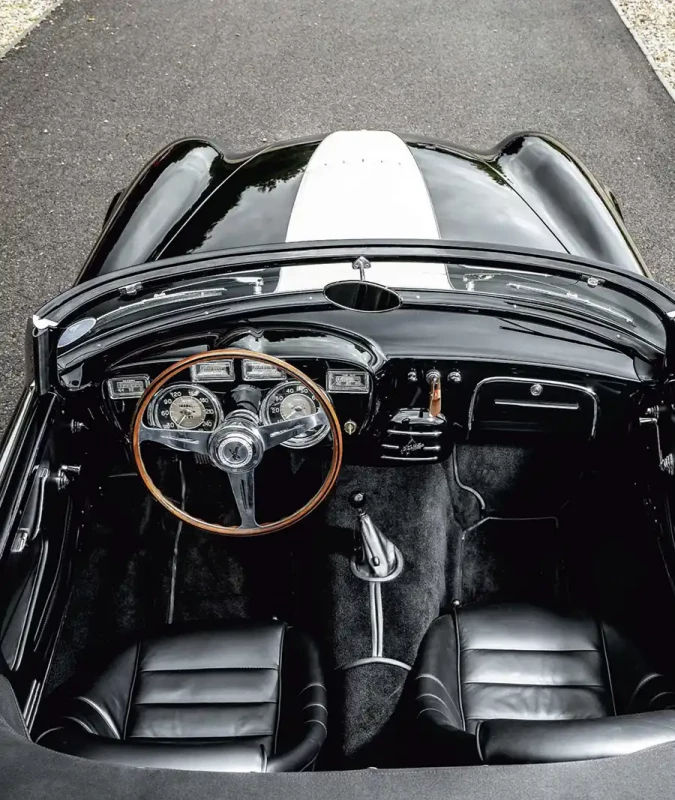
‘And then, well, you know, you start going down that road and end up pretty much re-restoring the entire car from scratch. The bodywork was great, actually, but all the interior, paint, chrome and mechanicals were re-done.’
One thing Segal did take a firm line on was the colour scheme, not only refusing to flip the colours back to the factory banana with black stripe, but actually ridding it of its vivid yellow dashboard, which had survived Powell’s original colour flip. This change, and how candid and unapologetic he is about it, possibly cost the car dear at Pebble Beach in 2022, where it took second in class (Postwar Touring Open) on its post-restoration debut. A year on from that Pebble Beach outing, 2110 visited the UK for the first time ever for the Concours of Elegance at Hampton Court. There it took the coveted Best of Show honour — voted for by the owners rather than judges — just to add a little spice to Octane’s story.
It was at Hampton Court that Octane saw 2110 in the metal for the first time and also caught up with owner Segal, whose Alfa 6C and Maserati A6GTZ we have previously enjoyed. Sunlight and the setting don’t do any harm, but there is no questioning the sheer breathtaking beauty of the Frua Spyder. Any concave grille is sexy, but this car manages to be beguiling, bewitching and menacing all at the same time, something it could never have carried off in its old fruity colour scheme. The proportions are just perfect and the finish is extraordinary. The little quarter-bumpers wrapping around each of the front fenders are wonderful, and the curvaceousness is light-years ahead of some other revered cars of the type from the period, which look plain gawky in comparison.
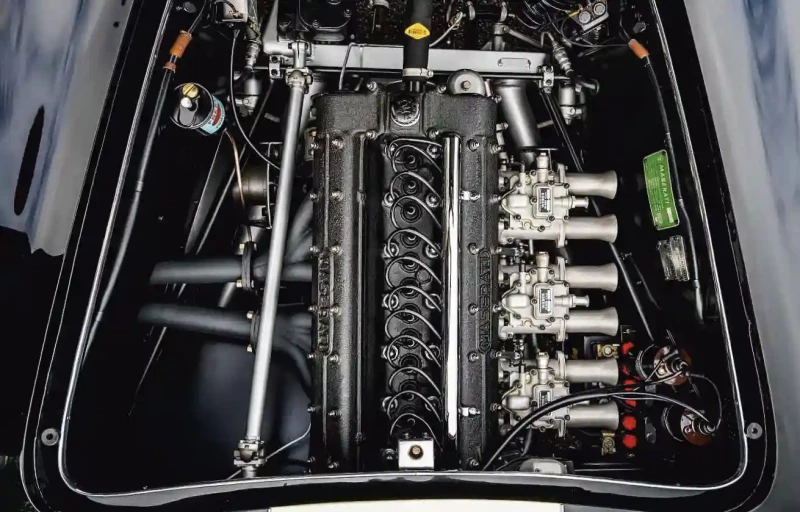
It stands out in any crowd. As does its owner. In the debonair royal gardens, Segal is cutting a dash as a new breed of collector, a younger, brasher type bashing down the doors of the establishment. The anti-tweed. Can you imagine just a few years ago a car, owned by a man who wore matching (by his own admission) ‘garish’ silk shorts and shirt (they defy description but quickly get dubbed ‘beachwear’) and who cracked open the malt scotch at 10am, taking top honours at the Concours of Elegance? But none of that matters, as it shouldn’t. What matters is that he is very frank about his car and his collection — ‘Hey, I don’t pretend to know everything about classic cars, but I do really know my Maseratis’ — and his gung-ho approach: happy to tell everyone about any modifications he has made during restoration, especially the colour flip. Yet still the car wins; that is what has changed.
It will be interesting to see if it gets the same reception when it goes back to Villa d’Este next year. Segal doesn’t seem that bothered: ‘Isn’t it exquisite? It epitomises what I am trying to find — and it’s getting harder and harder — these bespoke, one of one, or one of two cars. The real beauty of this one, though, is that I have the sister car, the coupe from the Baillon collection, which is currently being restored. That will be off-the-charts stunning and, as a pair, wow!’ We already know that Pebble Beach in 2024 is holding a special celebration of Frua Maseratis...
Segal adds: ‘Hopefully I will be able to keep those cars together because [including his 1957 Maserati 200SI Fantuzzi Spyder and 1956 A6G Zagato] I now have what I consider the four nicest Maseratis of the era. What would be next? Possibly a Birdcage. I’d take it on a track, but I wouldn’t race it — all the cars I collect are based on aesthetics.’
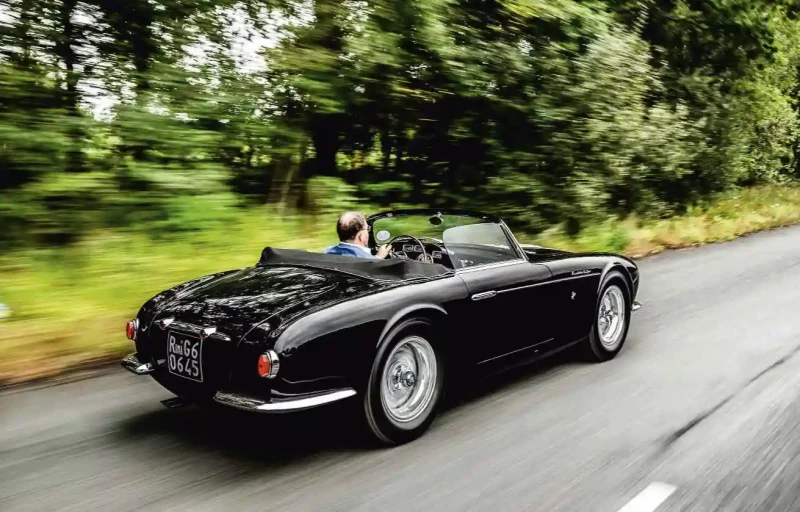
Well, not just aesthetics. Segal is pretty chilled about driving his Maseratis — ‘If they’re not driven, they’re just objects.’ He drove this little six-pot (‘spiritedly’, we are told by witnesses) on the pre-concours tour of Scotland and was still buzzing about the experience when we interviewed him. He was equally effusive about the rather shorter road-trip as he pottered up to collect the top award at Hampton Court. It was actually presented at the exclusive Windsor Castle dinner the previous night, but you have to put on a show for the public, don’t you?
And he is equally determined that Octane should extract the fullest from the complex 2.0-litre unit when it comes to our photoshoot: ‘It has great power from 3500 to 5000.
I drove it 250 miles and after warming up it was fine. Just go for it; you’ve got to drive it properly to get a feel for it.’
Despite the order, I start very gently, too gently perhaps, as is my wont with a car of this value and importance. But Segal’s insistence is still ringing in my ears, and soon so is the addictively urgent Gatling gun-speed clacking of that smooth straight-six spitting into the gloam. The carbs clear and, like an adrenaline shot to the heart, the little Maserati takes off as if someone has set fire to its tail.
We are revving engine 2050 to 7000rpm in an early-1950s sports car and it’s still pulling and fizzing and asking for more. This is a proper racing engine, not just the twin camshafts, dual plugs and dry sump, but gear-driven camshafts, hemispherical combustion chambers and a magneto ignition system. Keep it between 4000 and 6000 and it will really let rip and tear up the tarmac.
The brakes, finned drums all-round, are more than adequate to cope with the power, but the real revelation is the handling. Independent by coils and Houdaille dampers at the front, and live axle with leafs and Houdailles at the back, there is no skittish behaviour even on damp roads. Like a Lotus Elan, its balance is ethereal without having any of the usual sports car harshness. We’re pushing as hard as we dare and it is still totally neutral, no hint of under- or oversteer. Pile into a roundabout at the wrong angle, panic and wind on a bit more lock, crisis over. It has a remarkable fluidity in the steering and the way it combines with the ride; it is probably the best-handling and nicest-driving car from the era that I have had the privilege to sample.
Even the gearbox is sweet and pliable, though the revs drop dramatically when changing up into fifth… er, hang on, fifth? A post-drive conversation reveals that this car is now running an Alfa five-speed box, not exactly the stuff of concours, but definitely the stuff of someone who wants to use their cars, so I guess I sort of approve.
Besides, that’s not heresy. Heresy is that these spectacular cars are not much more appreciated, nor elevated above their noisy neighbours’ as they deserve to be.
TECHNICAL DATA 1955 Maserati A6GCS/53 Frua Spyder
- Engine 1985cc DOHC twin-plug dry-sump straight-six, three Weber 40 DCO3 carburettors
- Max Power 170bhp @ 7300rpm
- Max Torque 187lb ft @ 4300rpm
- Transmission Five-speed manual, rear-wheel drive
- Steering Worm and sector
- Suspension Front: double wishbones, coil springs, Houdaille hydraulic dampers, anti-roll bar. Rear: live axle,
- semi-elliptic leaf springs, Houdaille hydraulic dampers
- Brakes Finned drums
- Weight 780kg
- Top speed 135mph
Above, and above right Neat and beautiful Frua lines wrap the mechanical elements for a less-is-more whole; 2.0-litre straight-six is basically a racing engine, good for 170bhp at 7300rpm!
RightInterior is functional and sparse yet beguilingly beautiful at the same time — perhaps all the more so for having a black dashboard rather than the original ‘banana’ finish.


